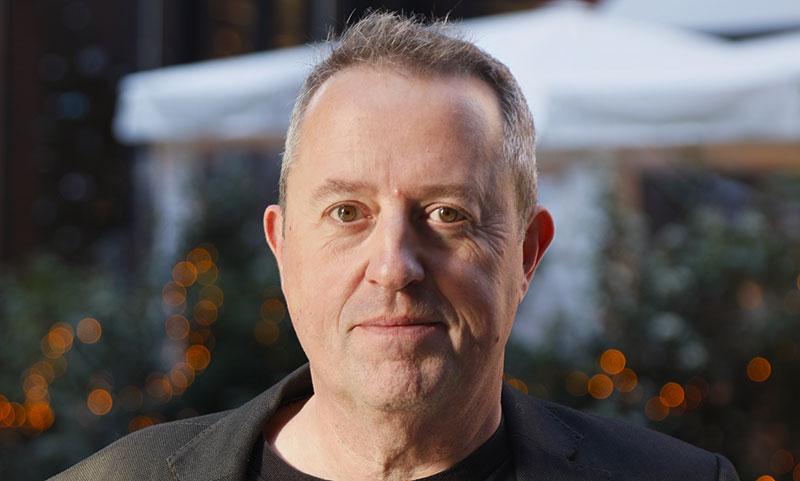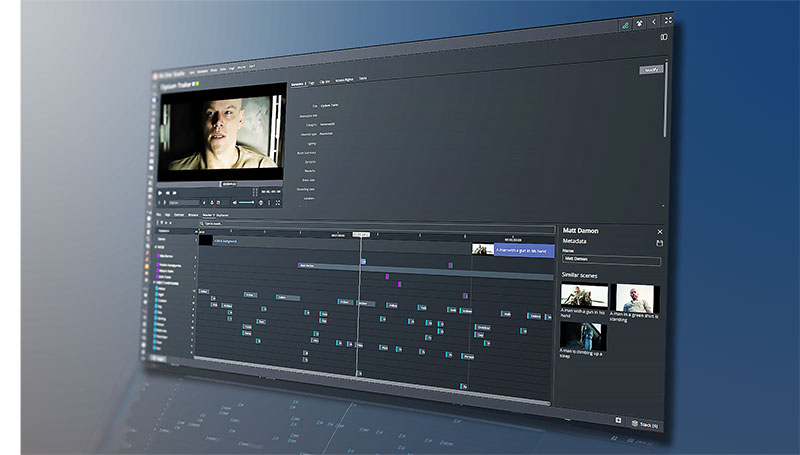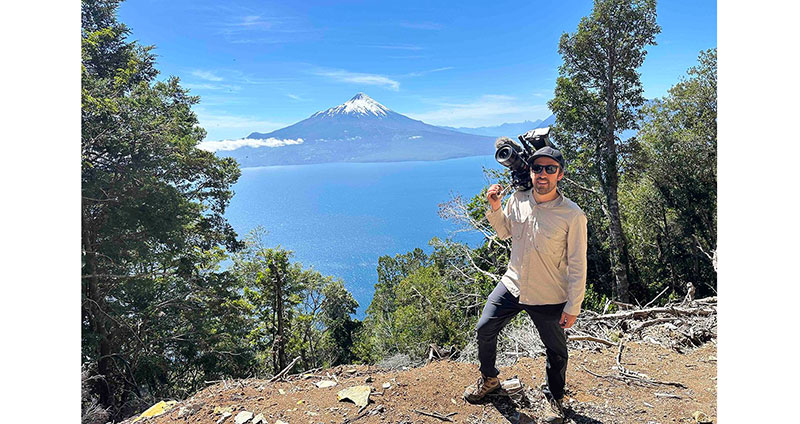Colourist Claudio Del Bravo talks about growing his career, building a studio in Rome from the ground up, and creating looks for projects from commercials, indie films and TV to feature films.
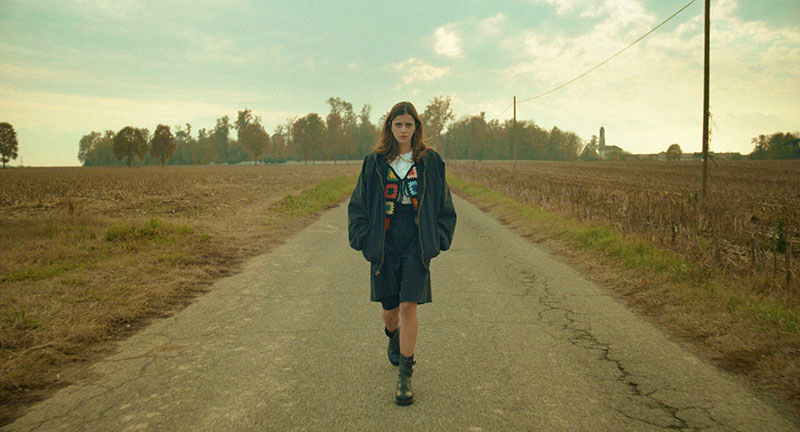
Amanda
Claudio Del Bravo is a senior colourist and head of long format at Frame by Frame in Rome. However, he has years of experience grading projects in a variety of formats from commercials to independent projects, film and TV.
Claudio credits his love of the visual arts and cinema with leading him toward a career as a colourist. “I studied arts and entertainment at university, which gave me a solid foundation in the theory and history of moving cinema. After finishing my studies, I started working at a post-production lab in Rome, initially as a conformer.
Discovering a Passion
“It was during this time that I discovered my passion for colour grading. I experienced the industry transition from analogue to digital, which was a fascinating period, working with some of the earliest DI software. This period really shaped my understanding of both analogue and digital technologies and workflows, which has been invaluable throughout my career.”
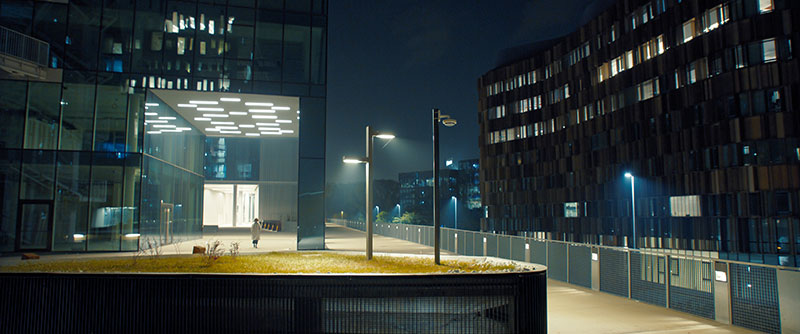
Citadel: Diana
Claudio has developed a strong, ongoing collaboration with Italian film director Luca Guadagnino. They have worked together on Challengers in 2024 and Bones and All in 2022, as well as Luca’s new project Queer, which has so far been shown at Venice Film Festival, Toronto International Film Festival and New York Film Festival.
His recent projects with other directors include the films Enea (2023), Amanda (2022) and Indivisibili (2016); TV series Citadel: Diana by director Arnaldo Catinari (2024), Bang Bang Baby (2022) and My Brilliant Friend (2018-2024); and a commercial for Aston Martin in 2021.
He joined Frame by Frame about 12 years ago, when its post-production department was newly formed. For Claudio, helping to build the studio and team from the ground up was an exciting challenge. His goal was to see it grow into a top-level player in the Italian film industry and compete internationally.
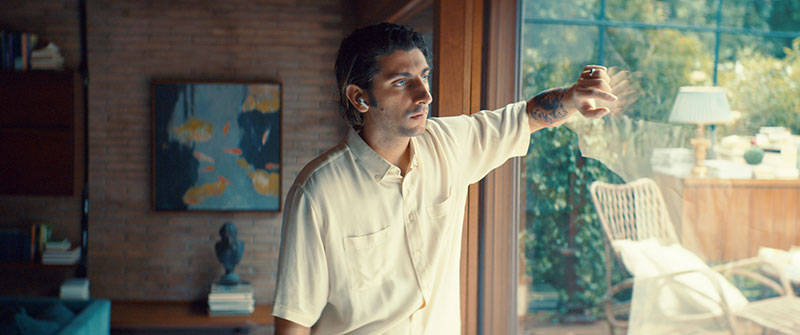
Enea
“Over time, by focusing on quality and surrounding myself with talented professionals, I helped the company progress from working on commercials and smaller films to handling major international projects. Similarly, these days I mostly work on long-form content like feature films and TV series, but I started out with commercials and indie films. The variety is part of what makes this job so exciting – the diversity keeps me on my toes and allows me to continuously grow as a person.”
Working with Baselight
Claudio has so far been using the Baselight grading system for about nine years. Although Baselight isn't as widely used in Italy as it is in some other countries, he considered from the beginning that it would be the right tool for the team at Frame by Frame. “Baselight has allowed us to distinguish ourselves with complex workflows and true creative freedom. The Base Grade feature is particularly brilliant as it gives us a huge amount of control, especially for highlights.”
Instead of a video signal or film stock as a foundation, Base Grade uses algorithms modelled on human perception. Not limited by a technical format like Rec.709, the dynamic range of Base Grade adapts to HDR and other formats by automatically converting the image into a linear colour space, where the original brightness ratios of the scene are restored. This means Base Grade works the same way in every working colour space.

Bang Bang Baby
All exposure values and pivot points in Base Grade are specified in aperture stops, which are familiar to director and cinematographers. Four global parameters are used to affect the whole image – flare, balance, contrast and saturation – and along with these, the image is also partitioned into definable brightness zones.
Claudio also likes working with tools such as Texture Equaliser – combined with paint, for example – and Texture Highlights. Colourists use Texture Equaliser to work with the effect that texture has on colour by dividing the image into individually adjustable spatial frequency bands. Any colour grading operation can be applied to the separate bands, which gives finer control over the colour-to-texture interaction.
Texture Highlights are used to reduce gamut clipping artefacts in HDR to result in smoother specular highlights and a better look for highlights overall.
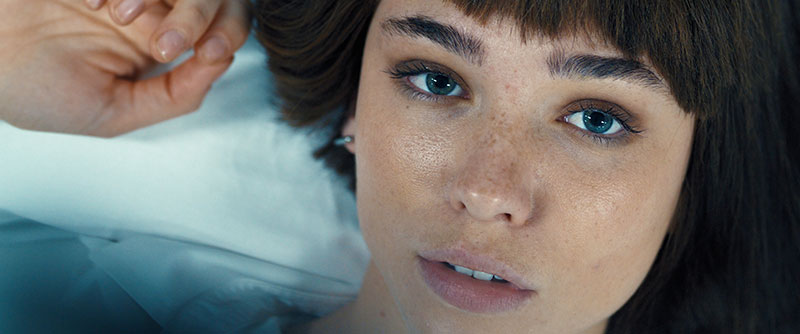
Citadel: Diana
Baselight 6.0 – More New Tools
On Queer, Luca’s most recent film, Claudio was working with the new Baselight 6.0. “The Chromogen tool in this new version has already become one of my favourites,” he said. “It gives colourists a new way to control the image and create unique looks.” Chromogen produces scene-referred looks that work with varied source material in different lighting scenarios. Because it operates in FilmLight’s new opponent, or perceptual, colour space, which is very big, it can handle modern, wide dynamic range camera data.
While Chromogen can be used to address specific characteristics such as Colour Saturation, Colour Crosstalk, Highlight Bleaching or Brilliance Reduction, FilmLight has also recreated a set of existing looks, using Chromogen to act as a guide for further customisation and editing. The user’s finished look can be saved as a preset for returning to later, or exported as a LUT for use on-set.
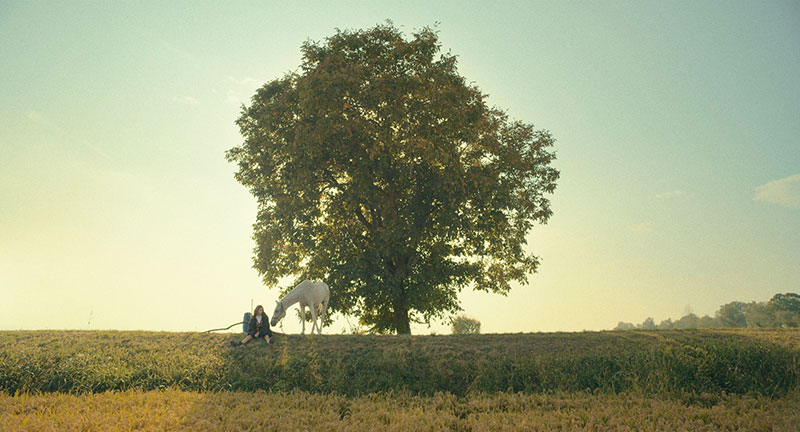
Amanda
Claudio said, “Face Warp within the new Face Track feature is also a huge help – it’s incredible how fast and accurate it is. What used to take hours can now be done in minutes – tasks like making shapes around the eyes for hundreds of shots.”
In contrast to area or planar trackers, Face Track follows each face through time, determining its pose. It transfers the skin of the face into a constant coordinate space, which becomes the canvas for colourists to make corrections or enhancements. The advantage is that the corrections will automatically be applied to 3D geometry, and be consistent, regardless of how the face moves.
Growing a Career
Claudio feels that his career has grown alongside Italian cinema. He has has the chance to work projects that have received significant recognition in Italy, like films by Edoardo De Angelis, Mario Martone and Riccardo Milani.

My Brilliant Friend
Opportunities have also come his way to work on international projects like My Brilliant Friend (2018-2024), an HBO series, which brought the challenge of satisfying global standards and audiences. This series was also one of the first projects in Italy to be graded in HDR, which made it even more significant.
“Nevertheless, the highlight of my career has been my ongoing collaboration with film director, Luca Guadagnino,” said Claudio. “Starting with Bones and All, then Challengers and now Queer, these projects have taken me to new creative heights. Collaborating with Luca has been a dream come true, and Challengers is probably the most important project I’ve worked on so far.”
Everything in the Frame
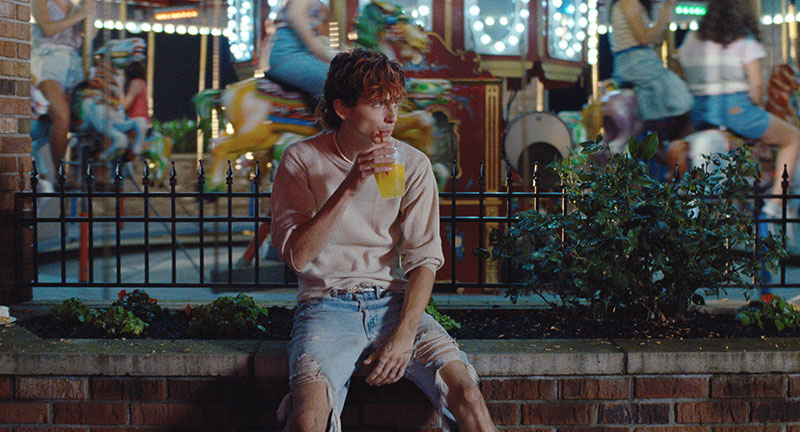
Bones and All - balancing horror with tenderness and poetry.

When describing his grading style, he says he says his goal is to remain deeply respectful of the cinematographer’s work. “I usually choose a naturalistic and gentle style, gradually creating the desired result.
“I approach each project with the belief that everything in the frame—the lighting, set design, costumes—is part of the cinematography. My job as a colourist is to bring all these elements together and help them serve the narrative. My goal is to serve the film’s story and communicate its message through elegant colour choices.”
Regarding the role colour plays in enhancing the audience’s emotional experience, he mentions the film Bones and All. “I had the pleasure of working with the talented DoP, Arseni Khachaturan, to create a contrast between the expansive, warm American landscapes and the darker, more intimate moments. Despite the gruesome theme of cannibalism, it’s ultimately a love story, so the challenge was to balance horror with a sense of tenderness and poetry. Colour played a huge role in achieving that balance. The result was a mix of unsettling, beautiful visuals.”
Getting in Early
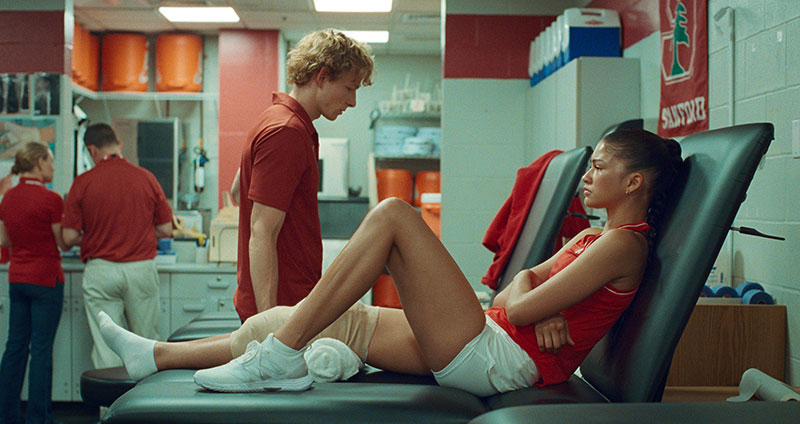
Challengers
He always prefers to get involved in projects as early as possible. “Establishing a visual tone at the start helps guide the project in the right direction from the very beginning. For instance, I’ve been working with Sayombhu again on Queer,” Claudio said. “We have developed a look inspired by the Technicolor ‘three-strip’ process that evokes the rich colours of early 1950s films.
“Reference to old films like Black Narcissus (1947), Amarcord (1973) and Edward Hopper’s paintings helped us create a distinct aesthetic. It also saves time in post-production because everyone is already aligned on the visual goals. This kind of collaboration helps ensure that the final result matches the original vision. We started by creating a LUT for the dailies, which then evolved into an LMT for ACES in the final post workflow.”
The Challenge of Challengers
Challengers was another example of early involvement in the filmmaking process, when Claudio worked with Sayombhu during pre-production to define the look. The project included a mix of formats – 35mm (3 and 4 perf), ALEXA and many VFX. “We used an ACES workflow to ensure that everything blended seamlessly, and Baselight was the natural choice to handle the complex workflow. It was an exciting challenge, especially with the combination of analogue and digital elements,” he said.
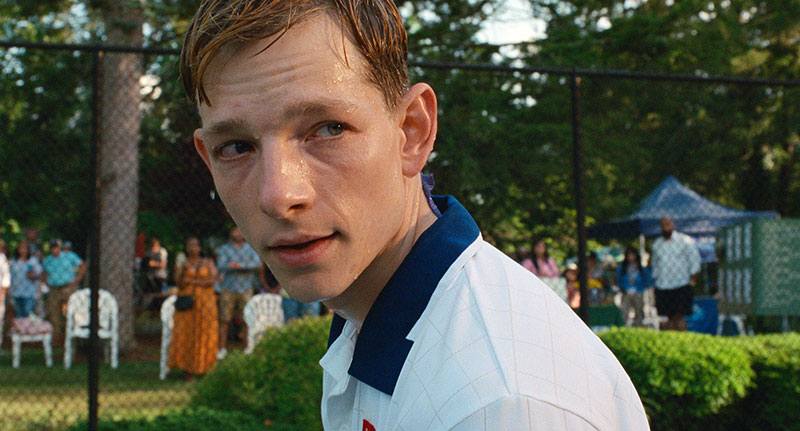
Challengers
As well as blending different formats, bringing sets and periods of the narrations into a cohesive visual language was the main challenge of this movie, using classic tennis films and photography for inspiration. “We needed to maintain a consistent look across different environments and emotional tones. The film explores a range of intense emotions, and we wanted to reflect that through the colour palette without being too overt,” said Claudio.
A particular goal here was to reflect the elegance of the tennis world while maintaining a sense of joy and vibrancy. The colours had to feel elegant, but also light-hearted, which was a fun challenge for Claudio. He noted that DoP Sayombhu Mukdeeprom’s colour choices on set were the key in creating that sense of beauty.
Visual Pop
“We also wanted to create a visual pop to the film, in the best sense of this word. To us ‘pop’ doesn’t mean simplistic or superficial, but rather enjoyable and fun. All this, combined with that incredible electronic and techno soundtrack creates a ‘match’ that makes you jump out of your seat.”

Challengers
The goal was a modern, clean look that still preserved the warmth and texture of 35mm film. He started by grading the HDR version to establish the overall tone, then refined it in the studio’s cinema room to ensure the transition between formats felt natural. Claudio said, “The result is a film that feels simultaneously classic and contemporary – shot on film, but with a modern edge.
“After the main P3 DCI version graded in the theatre with Sayombhu and Luca, I moved again to the HDR Dolby Vision workflow to obtain all the other versions. Baselight allows me to keep multiple trims in multiple layers for different targets, including Dolby Cinema, and everything merged in the same timeline. Lovely!” www.filmlight.ltd.uk

Bones and All





